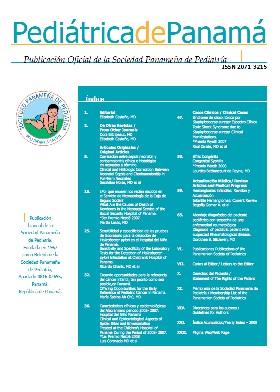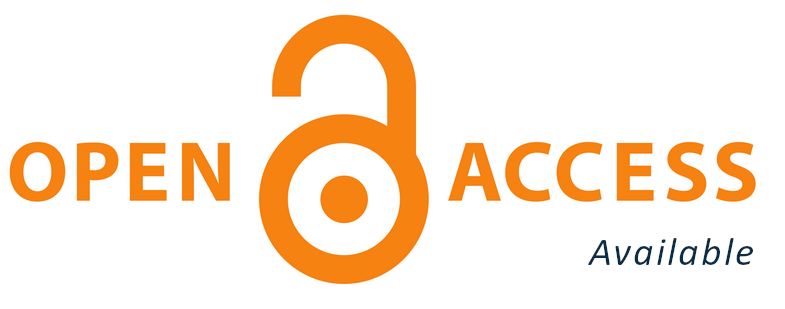About Other Journals: Drug's toxicity / Chronic pathologies / COVID19
Authors
DOI:
https://doi.org/10.37980/im.journal.rspp.20222132Keywords:
pediatric topics, scientific magazines, articlesAbstract
Source: Annals of Pediatrics
Title: Unintentional poisoning by cough and cold medications: Drugs with little usefulness and potential toxicity
Authors: Colom Gordillo A, Martínez Sánchez L, Pretel Echaburu C, Trenchs Sainz de la Maza V, Gotzens Bersch J, Luaces Cubells C.
Annals of Pediatrics 97(2022) 326-332
It is very common for parents or relatives to give children medication to alleviate the symptoms of respiratory conditions, without medical indication and in inadequate doses that can sometimes trigger adverse reactions such as intoxication or allergic reactions. We should teach the parents of our patients not to administer medications that seem harmless but in fact are not.
Introduction
The use of medications to alleviate the symptoms of the "common cold" in children is very frequent. In addition to the lack of scientific evidence supporting their usefulness, there is potential toxicity, with severe and even lethal intoxications having been described. The aim of this study is to describe the clinical-epidemiological characteristics of patients seen in a pediatric emergency department for suspected unintentional poisoning by anticatarrhal drugs.
Material and Methods.
Analytical-observational study of patients aged less than 18 years seen in a pediatric emergency department for suspected unintentional poisoning by an anticatarrhal medication, between July-2012 and June-2020. Severity was classified according to the Poisoning Severity Score (PSS): PSS-0=no toxicity; PSS-1=mild toxicity; PSS-2=moderate; PSS-3=severe; PSS-4=lethal. If the intoxication occurred during treatment with the drug, it was determined whether the patient's age was included in the therapeutic indications according to the technical data sheet.
Results
A total of 63 cases were collected. The drugs involved were: anticongestives and mucolytics (31; 49.2%), antitussives (26; 41.2%), oral bronchodilators (6; 9.5%). They were classified according to severity into: PSS-0=40 (63.5%), PSS-1=21 (33.3%), PSS-2=1 (1.6%) and PSS-3=1 (1.6%). In 29 patients (46%) there was a history of therapeutic use; of these, in 15 cases (51.7%) the patient's age was lower than that recommended in the technical data sheet. In 14 patients (22.2%) the intoxication was caused by an error in the dose administered by the caregivers.
Conclusion
Although scientific evidence does not recommend anticatarrhal drugs in children, unintentional intoxications by these drugs, sometimes moderate or severe, continue to occur.
---------------------------------------------------
Source: Andes Pediátrica
Title: Hospital care of patients with chronic pathology.
Authors: Gómez Garrido P, Suárez-Bustamante Huélamo M, Villalobos Pinto E, Retuerta Oliva A, López de Suso Martínez de Aguirre D, Jiménez García R.
Andes pediatr. 2022;93(5):640-647. Available at doi:10.32641/andespediatr.v93i5.4060.
Hospitals worldwide provide care to patients with chronic pathologies that require specialized evaluation by multiple professionals and long hospitalizations that do not guarantee a better quality of life for the patient, which implies their mobilization to specialized centers far from their families and not in areas close to their communities.
Objective: To analyze the epidemiological and clinical characteristics of a cohort of NPCC (children with complex clinical pathologies).
Patients and Method: retrospective descriptive study conducted in a tertiary hospital between June 2017 and June 2020, including patients with NPCC criteria. Epidemiological data, clinical data, admissions and services involved were collected and analyzed. Statistical analysis was performed using SPSS v22.0 software.
Results: 323 patients (median age 7 years) were included. The 93.1% had multisystemic disease, the most frequent chronic conditions being neurological (87.3%) and gastrointestinal (34.1%). Thirty-nine.9% were technology dependent. The main diagnoses were Infantile Cerebral Palsy (23.5%) and Epileptic Encephalopathy (13.9%). Each patient was followed by a median of 5 specialists. A total of 85.1% of the patients were admitted at some time, with a total of 739 admissions. The mean length of stay was 8.7 days. Technology-dependent patients accounted for 54.7% of hospitalizations. The reason for admission was: acute illness (64.3%), surgery (20.3%) and diagnostic procedure (15%). ICU was required in 23.1%. 62 admissions were partially carried out by the Home Hospitalization Unit.
Conclusions: NPCC require an increased number of admissions and multiple specialists. The implementation of specialized referral units may be useful to improve their care.
-----------------------------------------------
Source: Pediatrics
Title: Epidemiology of Neonatal COVID-19 in the United States.
Authors: Dean J, Marano R, Mikhael M, Feaster W, Sanger T, Ehwerhemuepha L.
Pediatrics.2022;150(4): e2022056297.
Objectives: Data on coronavirus disease 2019 (COVID-19) infections in newborns are limited. Our objective was to identify and describe the incidence, presentation, and clinical outcomes of neonatal COVID-19.
Methods: More than 1 million neonatal encounters in 109 US health systems from March 2020 to February 2021 were extracted from the Cerner real-time database. COVID-19 diagnosis was evaluated using severe acute respiratory syndrome coronavirus 2 (SARS-CoV-2) laboratory tests and diagnostic codes. The incidence of COVID-19 was estimated per 100 000 encounters.
Results: COVID-19 was diagnosed in 918 (0.1%) neonates (91.1 per 100 000 encounters [95% confidence interval 85.3-97.2]). Of these, 71 (7.7%) had severe infection (7 per 100 000 [95% confidence interval 5.5-8.9]). The median time to diagnosis was 14.5 days from birth (interquartile range 3.1-24.2). Common signs of infection were tachypnea and fever. Those with severe infection were more likely to receive respiratory support (50.7% vs.5.2%, p < 0.001). Severely ill neonates received analgesia (38%), antibiotics (33.8%), anticoagulants (32.4%), corticosteroids (26.8%), remdesivir (2.8%) and convalescent plasma (1.4%). A total of 93.6% of neonates were discharged after care, 1.1% were transferred to another hospital, and the discharge disposition of 5.2% was unknown. There was one neonate (0.1%) with presentation suggestive of Pediatric Multisystemic Inflammatory Syndrome who died after 11 days of hospitalization.
Conclusions: Most neonates infected with SARS-CoV-2 were asymptomatic or developed mild disease, without need for respiratory support. Some had severe disease requiring COVID-19 treatment with remdesivir and convalescent COVID-19 plasma. SARS-CoV-2 infection in neonates, although rare, can result in severe disease.
Downloads
Published
Issue
Section
License
Copyright (c) 2022 Infomedic Intl.Derechos autoriales y de reproducibilidad. La Revista Pediátrica de Panamá es un ente académico, sin fines de lucro, que forma parte de la Sociedad Panameña de Pediatría. Sus publicaciones son de tipo gratuito, para uso individual y académico. El autor, al publicar en la Revista otorga sus derechos permanente para que su contenido sea editado por la Sociedad y distribuido Infomedic International bajo la Licencia de uso de distribución. Las polítcas de distribución dependerán del tipo de envío seleccionado por el autor.






